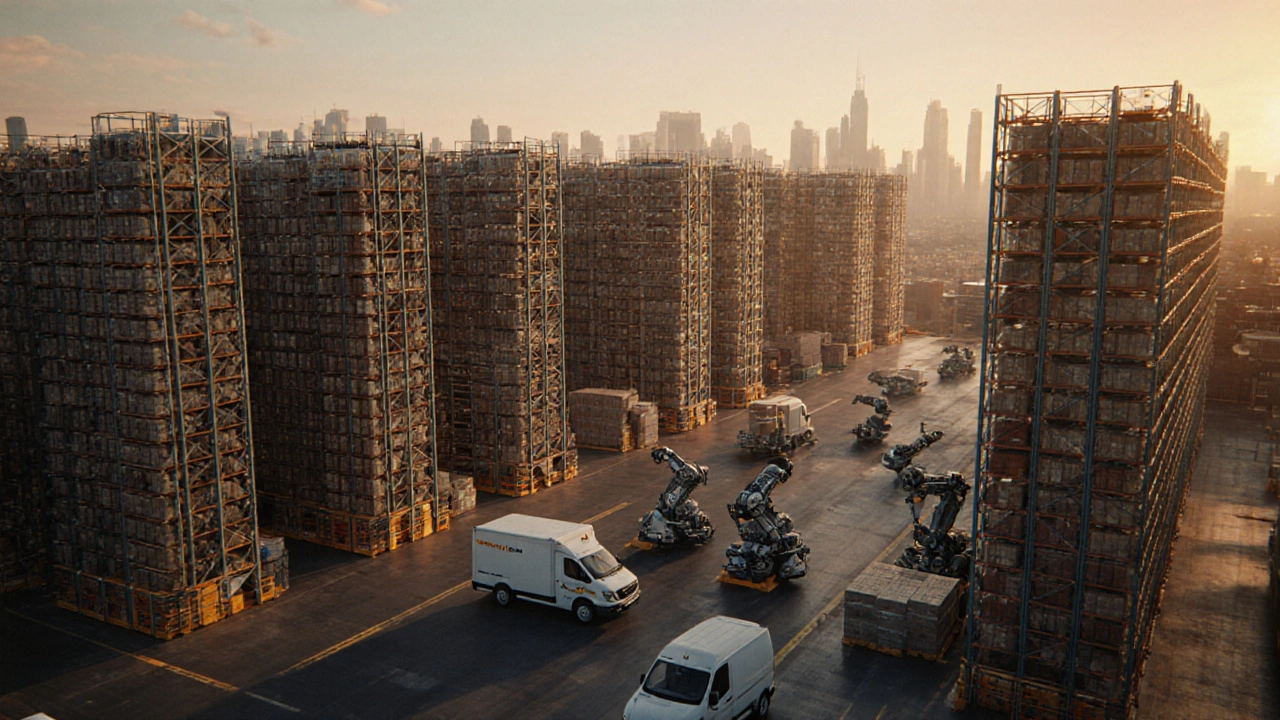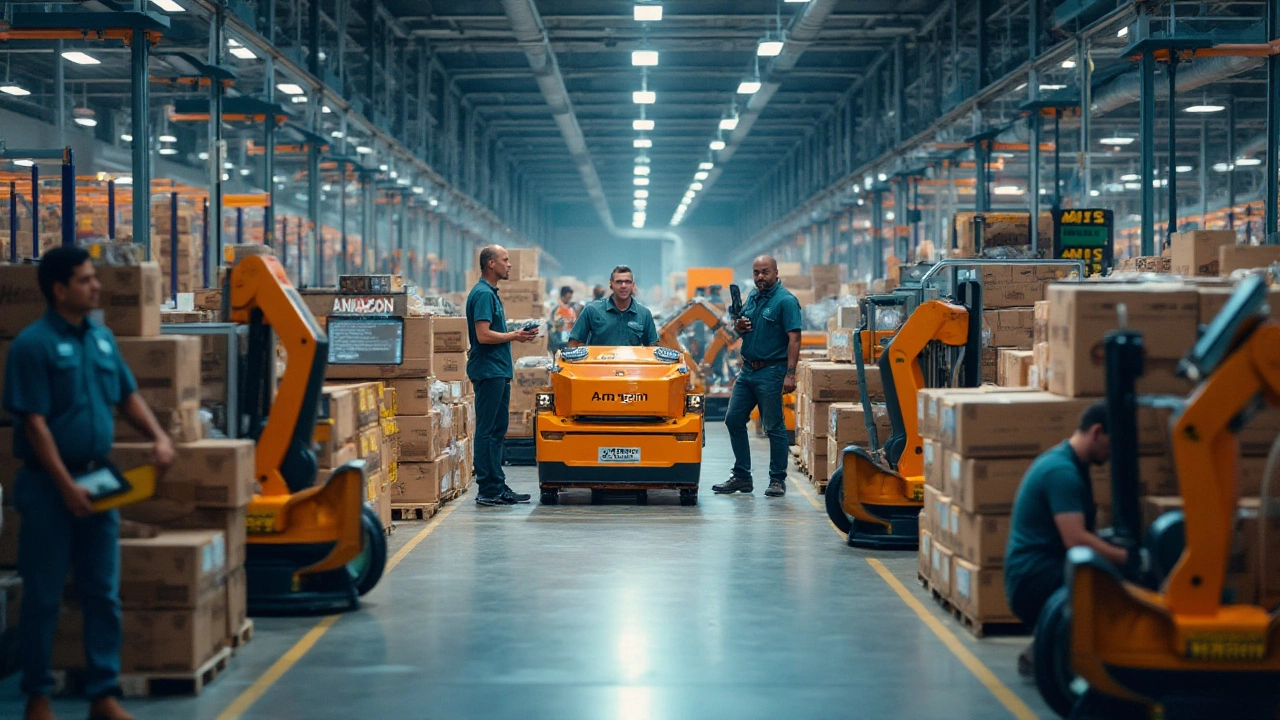Amazon Logistics Explained: What It Is and Why It Matters
When you click ‘Buy Now’ on Amazon, a huge network springs into action behind the scenes. That network is called Amazon logistics – a blend of warehouses, software, and carrier partners that move products from shelves to your front door in record time. Understanding the basics helps you work with Amazon or improve your own shipping process.
How Amazon Moves Packages from Warehouse to Doorstep
First, a product lands in an Amazon fulfillment center. These are massive, climate‑controlled buildings where robots and people pick items, pack them, and label each box with a unique barcode. The system then decides the fastest route, usually sending the parcel to a nearby sortation center before handing it off to a carrier – either Amazon’s own delivery service or a third‑party courier.
Once the parcel leaves the sortation hub, the carrier scans the barcode at each checkpoint. Real‑time updates travel back to Amazon’s tracking page, letting you see exactly where the package is. When the driver pulls up to your address, a final scan marks the delivery as complete.
Benefits of Using Amazon Logistics for Sellers
For sellers, Amazon logistics offers speed and reliability without needing a personal fleet. You get access to Prime‑eligible shipping, which boosts sales because customers trust fast delivery. The system also handles returns, automatically generating a label and routing the item back to the right warehouse.
Another perk is the analytics dashboard. It shows you how long each step takes, where delays happen, and how to improve inventory placement. By storing popular items in the right region, you cut shipping distance and lower costs.
Even if you don’t sell on Amazon, you can still learn from its model. Use multi‑warehouse strategies, real‑time tracking, and data‑driven decisions to make your own supply chain leaner.
If you’re starting out, focus on three things: keep inventory close to your biggest markets, use reliable carrier partners, and feed accurate data into your order‑management system. Those steps alone can shave days off delivery times.
Remember, speed isn’t the only goal. Packaging quality, clear labeling, and proactive communication keep customers happy and lower return rates. Amazon’s success shows that a well‑orchestrated logistics engine can turn a simple click into a loyal buyer.
Ready to tap into Amazon logistics? Sign up for Fulfilled by Amazon (FBA), upload your product catalog, and let the platform handle the heavy lifting. Or, if you run your own operation, borrow the playbook: automate picking, centralize data, and track every mile.
Is Amazon Logistics Bigger Than UPS? The Real Numbers Behind the Giants
Amazon moves more packages than UPS, but UPS still dominates global shipping and profitability. Here’s how the two logistics giants compare in volume, technology, reach, and business strategy.
Read MoreAmazon Delivery vs Amazon Logistics: Key Differences Explained for Shoppers and Sellers
Unpack the real differences between Amazon delivery and Amazon Logistics. Discover how each fits into your Amazon order experience and why it matters for buyers and sellers.
Read MoreExploring Amazon's Logistics Empire: A Hidden Powerhouse in E-commerce
Amazon's logistics network, spanning global delivery channels and state-of-the-art technology, plays a pivotal role in its e-commerce success. With Amazon Air, a fleet of trucks, and automation in warehouses, the company doesn't just rely on third-party carriers. This article explores how Amazon's logistics operations contribute to its efficiency and customer satisfaction, setting benchmarks in the industry. From managing a global supply chain to futuristic drone deliveries, Amazon is constantly reshaping the face of e-commerce logistics.
Read More

